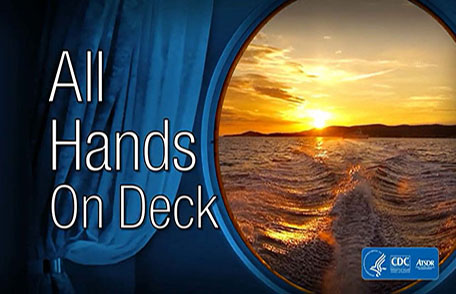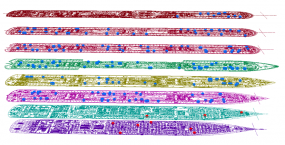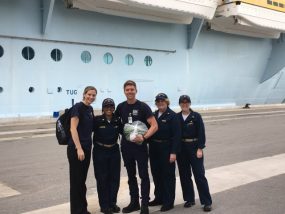All Hands on Deck! Geospatial Mapping in Outbreaks
The Agency for Toxic Substances and Disease Registry’s (ATSDR) Geospatial Research, Analysis, and Services Program (GRASP) and National Center for Environmental Health’s (NCEH) Vessel Sanitation Program (VSP) produced a video that explains the vital role geospatial science and technology can play in supporting cruise ship outbreak investigations. The video (All Hands on Deck!), featuring Dr. Amy Lavery and Dr. Jared Rispens, showcases the collaborative work of ATSDR and the Centers for Disease Control and Prevention (CDC) to stop illness from spreading from one voyage to another.
A Novel Partnership and Application of GIS in Public Health
Gastrointestinal illnesses (GI) can be challenging to control on cruise ships because of the close living quarters, shared dining areas, and rapid turnover of passengers. After an initial epidemiological health investigation in 2018, which looked at consecutive outbreaks to identify the cause of the illness on a vessel and stop it from spreading, the source remained unknown. VSP partnered with GRASP to use geospatial mapping to visualize the spread of illness.
“Outbreak investigations are important to stop illness from spreading from one voyage to another.”
-Jared Rispens, MD, 2017-2019 EIS Officer, NCEH/VSP
-Jared Rispens, MD, 2017-2019 EIS Officer, NCEH/VSP
Applying Geospatial Science and Technology to Enhance Traditional Public Health Investigations
To visualize the outbreak on the cruise ship, GRASP generated a 3-dimensional (3D) model of the cruise ship, making this one of the first projects where GRASP and VSP used 3D visualization. The 3D ship model mapped rooms that had sick passengers to visualize the spatial relationships between the sick passengers and the locations of their staterooms. Without the 3D model of the cruise ship, investigators may not have identified potential important moments in the outbreak.
The GRASP and VSP investigation team also used GIS to look for important spatial patterns during a cruise ship outbreak, such as a cluster of rooms with sick people. In one investigation, they examined a ship that had ill passengers on board on the voyage after a previous outbreak. By using GIS, the investigation team discovered that the outbreak on the second voyage started in rooms that had sick passengers on the prior voyage.
Impact of Work and Future Directions
These investigations illustrate the powerful ways geospatial science and technology can advance CDC’s response to outbreaks on cruise ships. Mapping these incidents can show events that could be related to the spread of illness and can have implications for the way cruise ship investigations occur in the future.
“The GRASP and VSP partnership is important because we’re applying geospatial science and technology to enhance traditional public health investigations.”
-Amy Lavery, PhD, 2017-2019 EIS Officer, ATSDR/GRASP
-Amy Lavery, PhD, 2017-2019 EIS Officer, ATSDR/GRASP
Building on this work, CDC is exploring how geospatial methods can aid investigations in other confined space environments such as hospitals, hotels, dorms, or other buildings that may have unusual patterns of illness. GRASP has already used this 3D method to develop and visualize a hotel model for the investigation of Legionnaires’ disease at a large urban hotel.
Learn more
To learn more about the work of GRASP and VSP, and the vital role geospatial science and technology can play in public health, please visit the CDC/ATSDR websites below.

























.png)











No hay comentarios:
Publicar un comentario